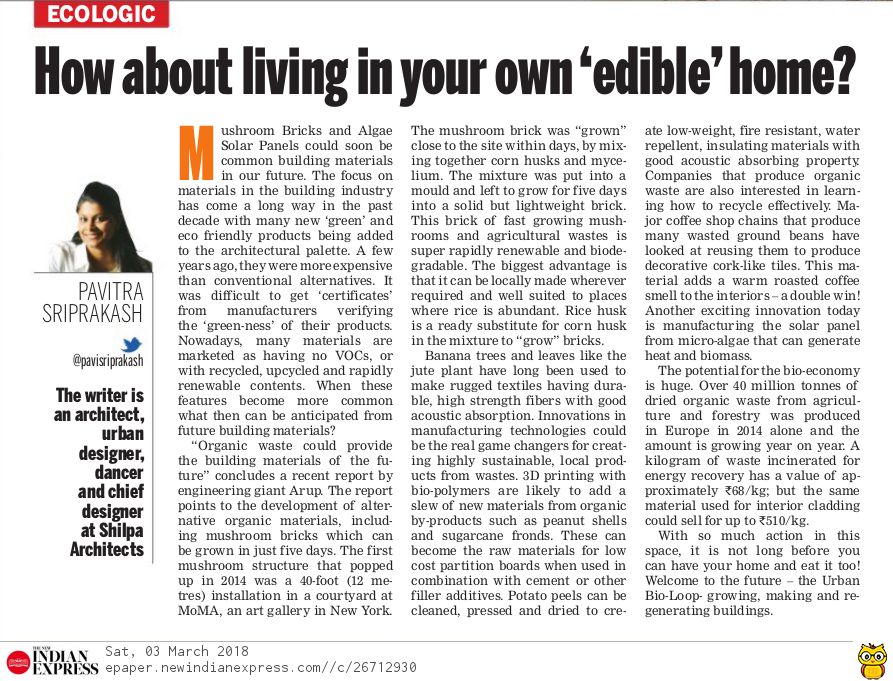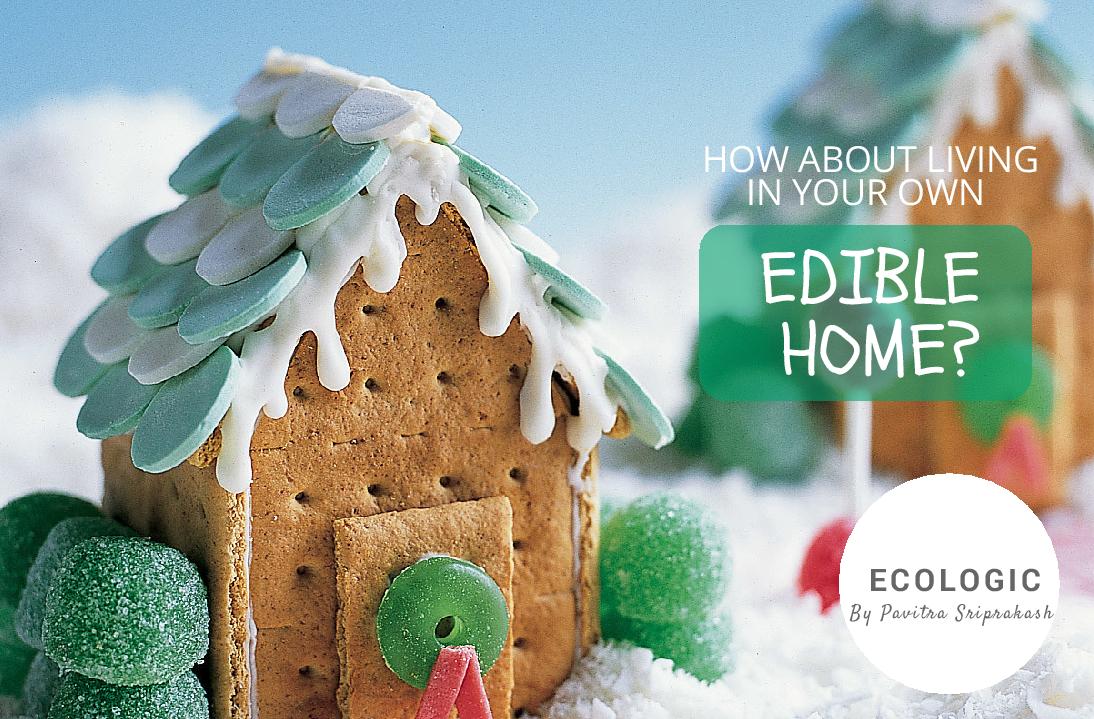Image Credits : www.marthastewart.com
March 3rd, 2018, New Indian Express: ECOLOGIC- Pavitra Sriprakash, the Chief Designer and Director of Shilpa Architects writes on the emerging trend of organic food as building materials.
Full Article
Mushroom Bricks and Algae Solar Panels could soon be common building materials in our future. The focus on materials in the building industry has come a long way in the past decade with many new ‘green’ and eco friendly products being added to the architectural palette. A few years ago, they were more expensive than conventional alternatives.
It was difficult to get ‘certificates’ from manufacturers verifying the ‘green-ness’ of their products. Nowadays, many materials are marketed as having no VOCs, or with recycled, upcycled and rapidly renewable contents. When these features become more common what then can be anticipated from future building materials?

“Organic waste could provide the building materials of the future” concludes a recent report by engineering giant Arup. The report points to the development of alternative organic materials, including mushroom bricks which can be grown in just five days. The first mushroom structure that popped up in 2014 was a 40-foot (12 metres) installation in a courtyard at MoMA, an art gallery in New York. The mushroom brick was “grown” close to the site within days, by mixing together corn husks and mycelium. The mixture was put into a mould and left to grow for five days into a solid but lightweight brick.
This brick of fast growing mushrooms and agricultural wastes is super rapidly renewable and biodegradable. The biggest advantage is that it can be locally made wherever required and well suited to places where rice is abundant. Rice husk is a ready substitute for corn husk in the mixture to “grow” bricks.
Banana trees and leaves like the jute plant have long been used to make rugged textiles having durable, high strength fibers with good acoustic absorption. Innovations in manufacturing technologies could be the real game changers for creating highly sustainable, local products from wastes. 3D printing with bio-polymers are likely to add a slew of new materials from organic by-products such as peanut shells and sugarcane fronds.
These can become the raw materials for low cost partition boards when used in combination with cement or other filler additives. Potato peels can be cleaned, pressed and dried to create low-weight, fire resistant, water repellent, insulating materials with good acoustic absorbing property. Companies that produce organic waste are also interested in learning how to recycle effectively.
Major coffee shop chains that produce many wasted ground beans have looked at reusing them to produce decorative cork-like tiles. This material adds a warm roasted coffee smell to the interiors – a double win! Another exciting innovation today is manufacturing the solar panel from micro-algae that can generate heat and biomass.
The potential for the bio-economy is huge. Over 40 million tonnes of dried organic waste from agriculture and forestry was produced in Europe in 2014 alone and the amount is growing year on year. A kilogram of waste incinerated for energy recovery has a value of approximately `68/kg; but the same material used for interior cladding could sell for up to `510/kg.
With so much action in this space, it is not long before you can have your home and eat it too!
Welcome to the future – the Urban Bio-Loop- growing, making and regenerating buildings.
About the author
Pavitra Sriprakash (@pavisriprakash), the Director and Chief Designer of Shilpa Architects, is an Architectt, Urban Designer, Dancer and Artist. She writes a weekly sustainability column for The New Indian Express titled ECOLOGIC.



